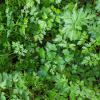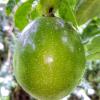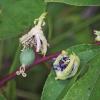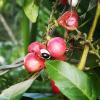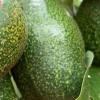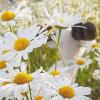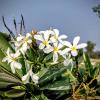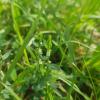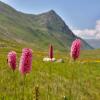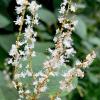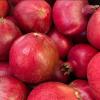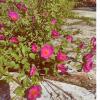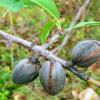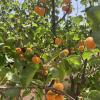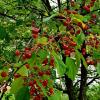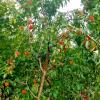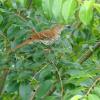Plant extracts & derivatives
Plant extract aka botanical extract-based skin care products are one of the biggest trends in the beauty industry in recent years. Being naturally balanced and dense in active ingredients, botanical extracts are excellent fighters against skin aging and inflammation.
Cosmetic exfoliation removes dead skin cells from the face and body to reveal younger and healthier-looking skin underneath. The most commonly used method is to use a specific substance to help scrub the skin.
Passionflower (Passiflora Incarnata) is reportedly an aphrodisiac, although the name itself is not derived from that reputation. It was named during the 17th century by Jesuit priests and explorers from Spain and Italy who professed to see symbols of the crucifixion in the plant's blossoms.
Passionflower (Passiflora Incarnata) fruit is native to Jamaica and South America. It was believed by the Aztec Indians to have medicinal and erotic powers.
Paullinia Cupana Seed Extract is derived from the seeds of Guarana. It is an amber liquid with a characteristic odor.
In ancient times, Avocados (Persea Gratissima) were thought to stimulate hair and skin cell growth. They contain high levels of vitamins B2, D, A, E, K, and potassium, making them an excellent source of nutrients.
Persea Gratissima Oil Unsaponifiables is the fraction of avocado oil that is not saponified in the refining recovery of avocado oil fatty acids. It contains about 30% of phytosterols, mainly Sitosterol, Campesterol, and Stigmasterol.
Persea Gratissima Sterols are active lipid phytosterols from avocados that lessen the inflammatory effects of UV damage to the skin. This indicates that this natural ingredient may help prevent premature skin aging due to UV radiation.
Both the needles and shoots of this well-known Norway Spruce (Picea Abies) tree have been used as remedies. A tea made from the needles has been used to heal wounds and ulcers.
In the 16th century, Anise (Pimpinella Anisum) was widely used as a mousetrap bait because mice found it irresistible. Anise has also been used to stimulate digestion and as an expectorant to relieve nausea and colic in babies.
Pine (Pinus Sylvestris) is a very old, reliable remedy for chest ailments such as bronchitis, colds, croup, and influenza.
Plantago Lanceolata Leaf Extract is a clear orange to brown liquid, a natural ingredient called “The Lance Against Skin Damage,” as it reduces signs of aging due to its antioxidant properties.
Plumeria alba (Frangipani) is a flowering plant native to India and Central and South America. It belongs to the family Apocynaceae, subfamily Rauvolfioideae.
For years, aging induced by sun exposure was called photoaging, attributed only to the UV spectrum of light. However, infrared rays and their heating bring a loss of elasticity and firmness, leading to the appearance of premature wrinkles.
Polygonum Bistorta Root Extract is obtained from the root of Bistort and is rich in chlorogenic acid, gallic acid, and polyphenols.
Poria Cocos Extract is derived from a fungus widely used in Traditional Chinese Medicine. It is rich in lanostane-type triterpenoids.
Purslane (Portulaca oleracea) is an herbaceous weed with a long history of culinary and medicinal use in various cultural groups throughout Europe, Asia, and South America. The succulent herb can be found growing in many cold climate areas (e.g. Canada) as well as warm areas (e.g.
Historically, Almonds (Prunus Amygdalus Dulcis) were used to flavor foods, sweets, jams, cough syrups, and almond oil. They were also used to adorn the body and religious buildings and were carried during religious celebrations.
The fruit of the Apricot tree (Prunus Armeniaca) was said to make one loving and kind, and the leaves were carried in sachets to attract love. The pulp was combined with other natural ingredients in creams, lotions, and facial masks for cosmetic use.
The fruit of the apricot tree (Prunus Armeniaca) was said to make one loving and kind, and the leaves were carried in sachets to attract love. The pulp was combined with other natural ingredients in cosmetic creams, lotions, and facial masks.
Made from ground pits of the Montmorency cherry (Bitter Cherry), Prunus Cerasus Shell Powder is a delicate mechanical exfoliating suitable for all skin types. It is a fine, beige-colored powder with a light sweet almond fragrance.
Glycation occurs from the reaction of glucose and a protein that produces AGEs (Advanced Glycation Products), forming stable brownish-yellow compounds in the skin, hair, and the body as a whole.
When first introduced, sometime in the fifth century B.C., the Peach (Prunus Persica) was called the Persian Apple. However, it was believed to have been introduced by the Chinese and was mentioned in Confucius's books.
The pressed extract of this Peach (Prunus Persica) seed was used as a hair growth product for balding spots and, in some parts of the world, was combined with raw apple cider before application.
When first introduced, sometime in the fifth century B.C., the peach was called the Persian Apple. However, Prunus Persica was believed to have been introduced by the Chinese and was mentioned in Confucius's books.
Wild cherry (Prunus serotina) bark is considered to have astringent, tonic, expectorant, and sedative properties. It has been used to treat bronchitis, whooping cough, consumption, and dyspepsia.
Prunus Serotina Bark Extract has also been used as a healing agent for cuts and sores.
